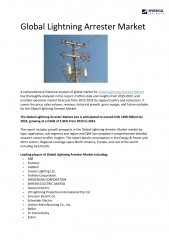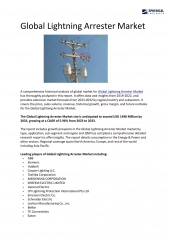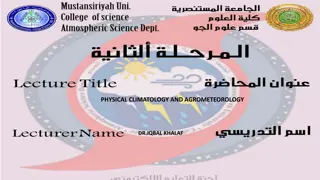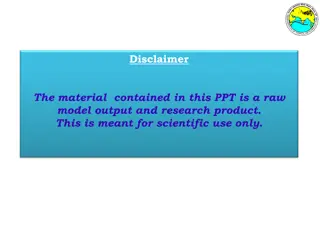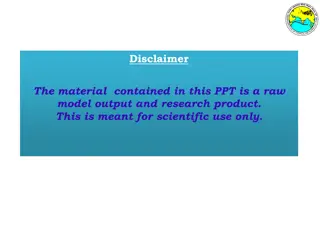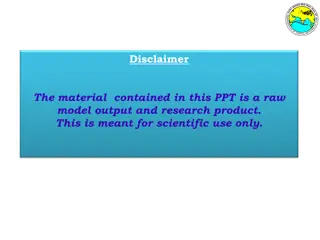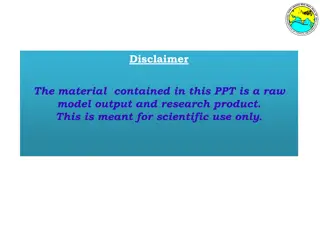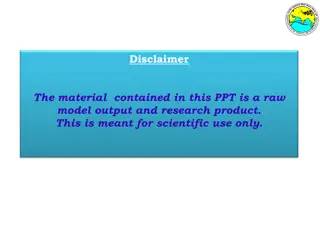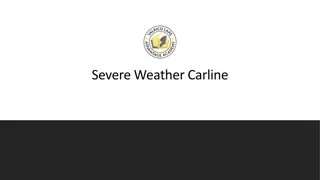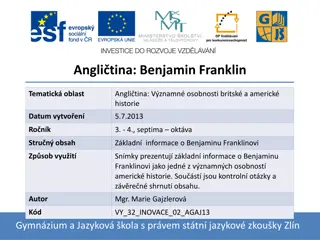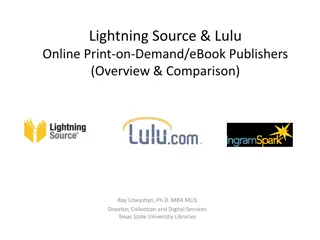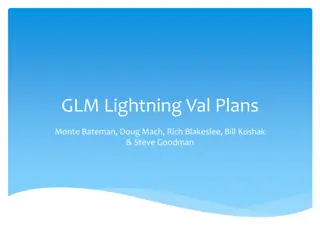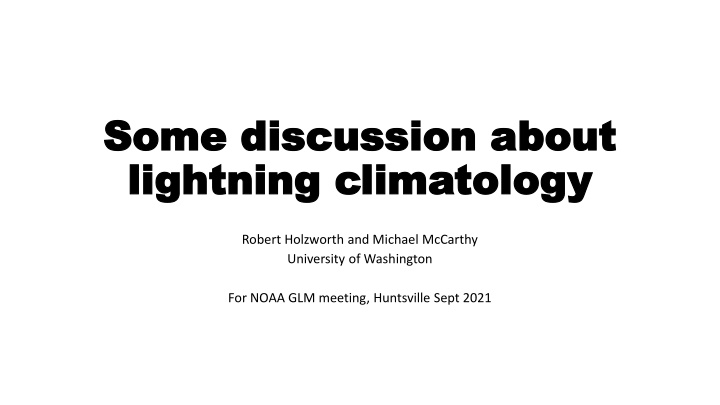
Lightning Climatology Insights and New Science Directions
Explore the latest discussions on lightning climatology by Robert Holzworth and Michael McCarthy from the University of Washington. Discover insights on group energies, relationships between GLM and WWLLN energies, and new research directions on aerosol influences on thunderstorms and sea spray effects. Learn about the impact of aerosols on lightning occurrence and the contrasting effects of marine aerosols on thunderstorms, as well as the influence of sea spray on convective clouds and lightning frequency.
Download Presentation

Please find below an Image/Link to download the presentation.
The content on the website is provided AS IS for your information and personal use only. It may not be sold, licensed, or shared on other websites without obtaining consent from the author. If you encounter any issues during the download, it is possible that the publisher has removed the file from their server.
You are allowed to download the files provided on this website for personal or commercial use, subject to the condition that they are used lawfully. All files are the property of their respective owners.
The content on the website is provided AS IS for your information and personal use only. It may not be sold, licensed, or shared on other websites without obtaining consent from the author.
E N D
Presentation Transcript
Some discussion about Some discussion about lightning climatology lightning climatology Robert Holzworth and Michael McCarthy University of Washington For NOAA GLM meeting, Huntsville Sept 2021
GLM groups most closely associated with RF strokes GLM flashes can also work for climatology studies Energy comparison still all over the map Show a plot of group energy vs WWLLN energy (almost no relationship between GLM energy and RF energy) New science directions Aerosol influence on thunderstorms and lightning Shipping lanes and sea spray Increase in lightning at high latitude Show polar plot, and latitude plots High energy strokes/causes, global distribution, effect Show global plot, emphasize Andes and mag equator
GLM sees a nice range of Flash (and Group) energy, not unlike RF distributions
BUT: Very weak relation between GLM energy and WWLLN energy Bright matches with WWLLN superbolts? no matches of bright groups to any >100kJ WWLLN strokes.
Daily GLM lightning climatologies can be built on summation of bright groups for a day, rather than using individual groups
Aerosols are now known to influence lightning occurrence directly Thornton et al, 2017 https://agupubs.onlinelibr ary.wiley.com/doi/full/10. 1002/2017GL074982
Sea spray kills thunderstorms Large contrasting effects of fine and coarse marine aerosols on lightning Zengxin Pan et al (Daniel Rosenberg and Joel Thornton s groups) Conclusion: Increasing Coarse Sea Spray causes Deep Convective Cloud weakening, which is the opposite of fine aerosol Deep Convective Cloud invigoration. This is manifested in warming Cloud Top Temperatures and decreasing lightning frequency for the same fine aerosol concentrations. The decrease is strongest ( 0.2) for the largest fine aerosol concentrations, where the Coarse Sea Spray restores most strongly coalescences and warm rain on the background of the most suppressed coalescence by fine aerosols. Submitted to Science 2021
We are seeing a steady increase in lightning at high latitudes, including above latitudes GLM can reach
Lightning in the Arctic, Holzworth et al, 2021 https://dx.doi.org/10.1029/2020GL091366 GLM can see up to 65 degrees (lower two curves)
Global distribution of superbolts, Holzworth et al, 2019 https://doi.org/10.1029/2019JD030975 Prime region for GLM
Conclusions: Lightning Climatologies are easy to generate for WWLLN, or space based sensors (ISS/LIS or GLM), BUT understanding the causes for global variations leads to new science 1. GLM studies can help explain the lightning climatological peak of superbolts over the Andes, along the magnetic equator, high and low latitudes (near N and S 45 degrees) 2. Add to our understanding of increasing strokes at high latitudes And 3. Help dig into influence of aerosols on lightning and thunderstorms.

